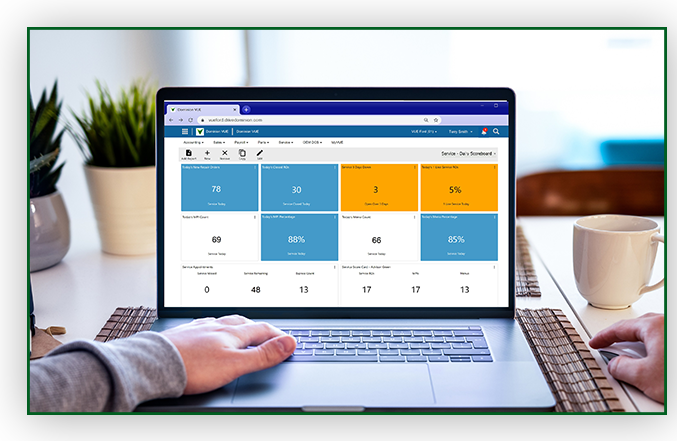By: George Nenni, Vice President of Operations
This is the first in a series of blogs written to explore the vehicle reconditioning process and how it affects dealership profitability. Today, we’ll examine the process involved in reconditioning inventory.
Getting used vehicles ready for sale can have a measurable effect on a dealership’s bottom line. Vehicles aren’t ready for sale unless they are merchandised right for the market with actual photos, videos, comments and competitive pricing. Prior to taking the first photo, however, used vehicles on any lot must look their best.
Some vehicles need new tires, while others need body or service work. A lucky few only need a quick trip through the car wash. But what comes first? Mechanical? Body Shop? Sublet services? Knowing how long each step should take and how much to spend on each vehicle to get the best return can be challenging. Unfortunately, many dealerships don’t have an efficient process for tracking workflows through these pre-sale stages. Inefficiencies in these critical first steps can kill a dealership’s margins before reconditioned inventory ever make it out on the lot.
What Does Your Reconditioning Process Look Like?
Have you considered how your dealership’s reconditioning process affects profitability? The longer vehicles are not on the lot, the less opportunity for maximum ROI.
Ask yourself these questions:
- Do I know where my vehicles are in the reconditioning process?
- Do I know how many days vehicles spend in each step?
- Are there bottlenecks to getting vehicles front-line ready?
- Where are they; who is responsible; what are they costing me?
If You’re Not Tracking It, You’re Lacking It
Knowing where vehicles are at every step in the reconditioning process is critical to managing a dealership’s ROI. Making sure everyone knows when to expect a vehicle for their department’s service helps the process flow smoothly. Without identifying bottlenecks and holding departments accountable, improvements can’t be made.
Hidden Margin Killers
In addition to tracking and monitoring, it’s important to understand how reconditioning inefficiencies affect other departments.
Department |
Effect on Department |
|---|---|
| Appraisal | Miscalculations of actual reconditioning costs and bottlenecks affect margins calculated at acquisition. |
| Sales | Delays in getting to front line ready impact ROI. |
| Operations | Difficult to track where vehicles are and who is responsible for bottlenecks. |
| Merchandising/Photos | Poor use of time if vehicles are not ready for photos. |
| Service/Body/Detail | Too much time tracking down vehicle status affects daily workflow. |
| Sublet Services | Vehicles not ready for service as expected – downtime and extra costs can be incurred. |
This worksheet helps define the most efficient process for your dealership.
In Part II, we’ll take a deeper look at how an inefficient process affects profitability.






